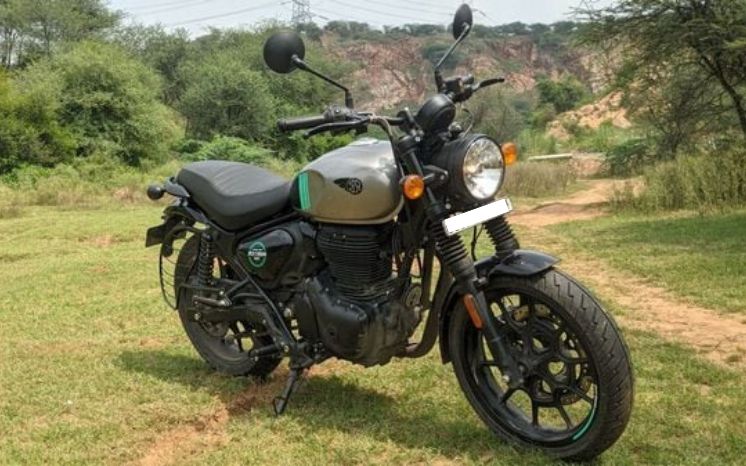Motorcycle maintenance is a critical aspect of owning a motorbike, and one fundamental skill that every rider should possess is knowing how to adjust the carburetor mixture. This process is crucial for ensuring that your bike operates at its peak performance and efficiency.
A well-adjusted carburetor mixture guarantees smooth engine operation, improved fuel economy, and reduced exhaust emissions. This seemingly technical task can be mastered with a little practice and a firm understanding of the motorbike’s operating principles.
In this guide, we will walk you through the process of adjusting the carburetor mixture on a motorbike. Whether you’re an experienced rider or a beginner, this knowledge will empower you to take better control of your bike’s performance.
How To Adjust Carburetor Mixture On A Motorbike
Before we dive into the adjustment process, let’s first understand what a carburetor is and its role in the functioning of your bike. A carburetor is a device that mixes air and fuel before it enters the engine. This mixture is then ignited by the spark plug to power your bike.
The ideal ratio of air to fuel for efficient combustion is 14.7:1, commonly referred to as the stoichiometric ratio. However, this ratio may need to be adjusted depending on factors such as altitude, temperature, and engine modifications.
When adjusting the carburetor mixture, you are essentially changing the amount of fuel that is mixed with air. This will either make the mixture richer (more fuel) or leaner (less fuel) depending on the direction of adjustment.
Now, let’s get into the step-by-step process of adjusting the carburetor mixture on a motorbike:
- Start by locating the carburetor on your bike. It is usually located at the bottom of the fuel tank and has a set of metal tubes attached to it.
- Next, locate the idle speed adjustment screw on the carburetor. This is usually a small knob or screw that can be turned by hand.
- Start your engine and let it warm up for a few minutes.
- With the engine idling, turn the idle speed adjustment screw in either direction until you find the highest idle speed. Note this position as we will come back to it later.
- Now, locate the air/fuel mixture screw on the carburetor. This is a small screw with a spring attached to it.
- Turn the air/fuel mixture screw in one direction until you notice a drop in idle speed or hear the engine start to sputter. Note this position as well.
- Next, turn the air/fuel mixture screw in the opposite direction until you reach the same point where the idle speed dropped or the engine sputtered. Note this position as well.
- Finally, turn the air/fuel mixture screw back to the middle of these two positions, ensuring that your idle speed remains high.
Congratulations! You have successfully adjusted the carburetor mixture on your motorbike.
It is essential to note that the adjustment process may vary depending on the make and model of your motorbike. It is always best to consult your owner’s manual for specific instructions.
In addition, it may take a few attempts to find the perfect balance between air and fuel mixture for your bike. Don’t get discouraged if it takes some trial and error – with practice, you’ll become an expert at adjusting the carburetor mixture on your motorbike.
See more: How To Bypass Ignition Switch On ATV
Do You Know If a Carburetor Is Lean or Rich?

One common question that arises when discussing carburetor mixture adjustment is how to tell if your bike’s carburetor is running too lean or too rich.
A lean mixture means there is more air than fuel in the mixture, while a rich mixture has more fuel than air. Both scenarios can lead to poor engine performance and potential damage if not addressed.
To determine if your carburetor is lean or rich, you can perform a spark plug reading. Remove the spark plugs and inspect them – if they are dry and grey, your bike has a lean mixture. If they are black and oily, it indicates a rich mixture.
It’s essential to regularly check your bike’s carburetor mixture and make adjustments when necessary for optimal performance. By following the steps outlined in this guide, you can confidently adjust the carburetor mixture on your motorbike and keep it running at its best.
FAQs
These are some of the most common questions riders have when it comes to adjusting the carburetor mixture on a motorbike. We hope the answers below will provide you with additional clarity and confidence as you work on maintaining your ride.
How often should I adjust my carburetor mixture?
The frequency of carburetor mixture adjustment can vary based on several factors. These include the type of riding you do, the altitude at which you ride, and changes in seasonal weather patterns. Generally, you should check your bike’s performance regularly and adjust the carburetor mixture whenever you notice changes such as decreased fuel economy, rough idling, or difficulty starting the engine.
It’s important to remember, however, that adjusting the carburetor is not a replacement for regular services and maintenance. Always consult your bike’s service manual or an experienced mechanic if you are unsure.
Does a dirty air filter affect carburetor adjustment?
Yes, a dirty air filter can indeed affect the carburetor adjustment. The air filter’s primary function is to provide clean, filtered air for the carburetor to mix with fuel. If the filter is dirty or clogged, it can restrict the airflow, causing the carburetor to receive less air and make the mixture rich.
Cleaning or replacing your air filter might be necessary before adjusting the carburetor. This action ensures that the carburetor receives a steady, clean air supply for an optimal air-fuel mixture.
What tools do I need to adjust the carburetor mixture?
Adjusting the carburetor mixture typically requires simple hand tools. You’ll likely need a flathead screwdriver to adjust the air/fuel mixture screw and possibly a wrench or socket set to remove any coverings or components obstructing your access to the carburetor.
It’s a good idea to have a tachometer on hand as well. This instrument measures engine speed in revolutions per minute (RPM), helping ensure your engine idles at the correct speed while making adjustments.
Is it safe to ride the bike right after adjusting the carburetor mixture?
After adjusting the carburetor mixture, it’s usually safe to ride the bike. However, it’s recommended to start with a short test ride in a safe area to ensure the engine is running smoothly and performing as expected.
If you notice any irregularities in performance, or if the bike is not running as smoothly as it should, you may need to make further adjustments to the carburetor mixture. Be sure to always ride safely and perform any maintenance tasks conscientiously to protect both your bike and yourself.
Final Thoughts
Adjusting the carburetor mixture on your motorbike is a crucial aspect of maintaining optimal engine performance. Becoming adept at identifying signs of a lean or rich mixture, and knowing how to adjust accordingly, will significantly enhance your motorbike’s operation.
Remember, this process may involve some trial and error. But with patience and practice, you will eventually master the art of carburetor adjustment, leading to a smoother ride and longer engine life.
Never underestimate the importance of regular maintenance and checks. A well-maintained bike not only performs better but also effectively reduces the risk of unexpected breakdowns. From spark plugs to air filters, each component plays a crucial part in your bike’s overall health.
In conclusion, learning how to adjust the carburetor mixture on your motorbike is a valuable skill for any rider. It boosts your understanding of your bike’s workings, making the open road that much more enjoyable. Happy and safe riding!
